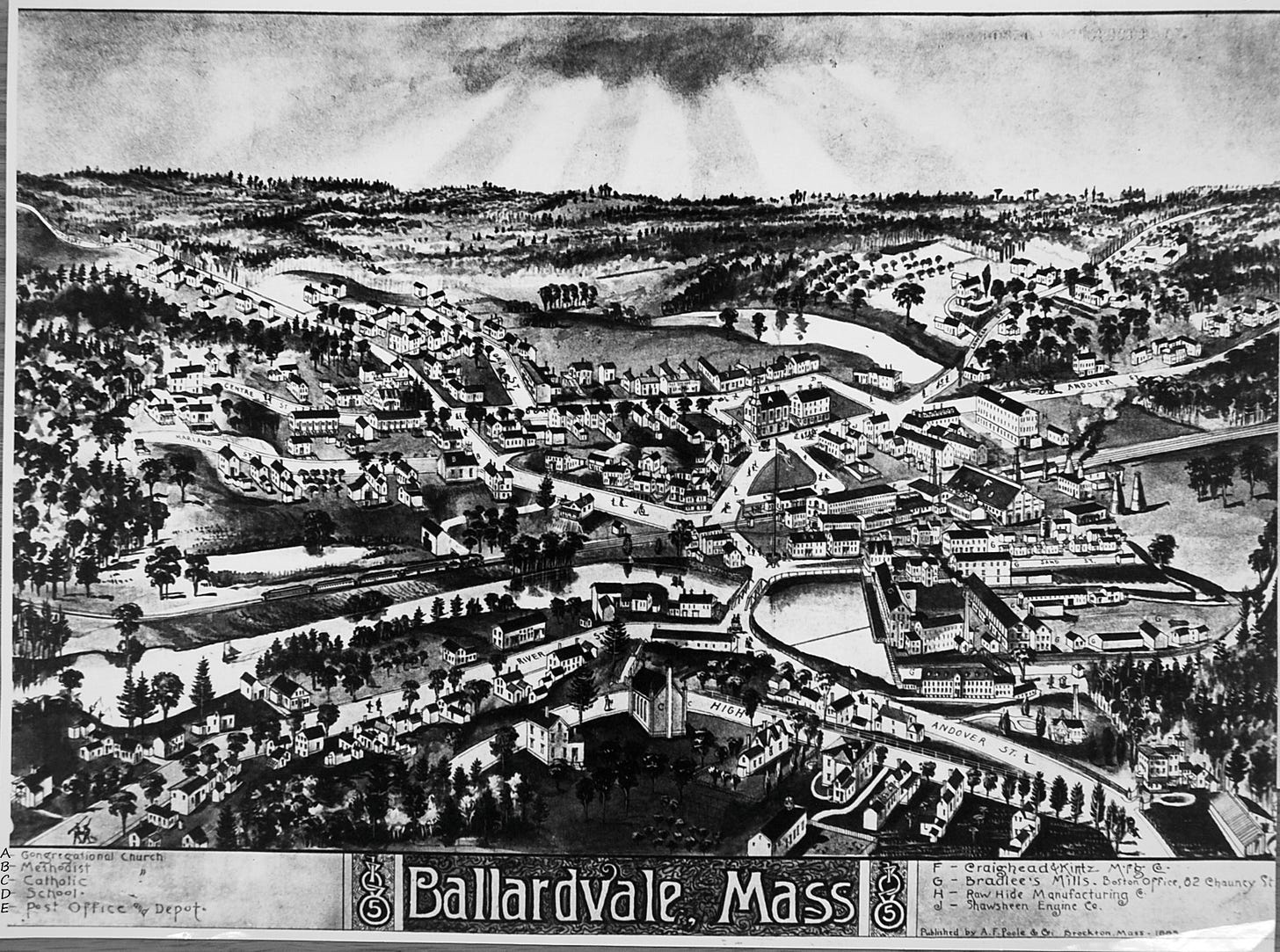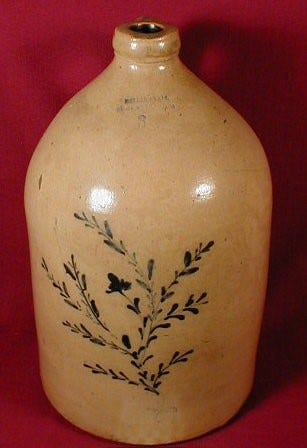What's It Wednesday - Crocks, jugs and pots
Earthenware of this sort is often referred to as Bennington pottery. However, Vermont was not the only place to produce earthenware crocks and jugs. Although these containers look very similar to the more famous Bennington (Norton) Pottery ones, these are truly home-grown - made by Ballard Vale Stone Manufacturing of Ballardvale/Andover, MA.
Earthenware pottery can be traced back to use in the Near East by 2500 b.c. and to Palestine about 2800 b.c. The Roman Empire helped in the spread of the concept outside of the Mediterranean region into Germany and beyond to Britain. The technology was propelled by the development of a table wheel to turn the clay containers.
Later technology was developed to fire the vessel in a kiln and then glaze it with salt. After the item was fired at about 2100 degrees Fahrenheit, a bucket of salt was thrown in. The salt vaporized immediately covering everything with a glossy finish, called salt glaze. The transport of liquids like wines, syrups, and oils was easier in fired, clay earthenware containers, than in wooden barrels and glazed items could be cleaned more easily.
It wasn’t long before earthenware vessels were adopted into the colonies. Immigrant potters brought their skills to America in the 17th and 18th centuries. There were three East Coast regions that became the hubs of earthenware pottery. New England, mid-Atlantic, particularly Philadelphia, PA and Baltimore, MD, and the Tidewater South areas of Virginia, particularly Williamsburg.
John A. Burrison in his article, Fluid Vessel: Journey of the Jug, writes that:
Influential settlers of these three East Coast regions can be traced to specific areas of Britain, theoretically making it possible to compare early American earthenware jugs with those of key source areas. Thus, for New England one would look to East Anglia, for the mid-Atlantic to northern England and Wales, and for the coastal South to southwest England.
In the 1880’s, Ballard Vale Pottery was a vibrant business located in the heart of the Ballardvale mill district.
The company was started in 1880, by Lewis Willard, a potter formerly of Boston (Charlestown), MA The company known as the Ballard Vale Stoneware Co. occupied the north part of the stone building that is east of the railroad tracks. It can be seen on the 1884 map below as the large, pink colored, building complex next to the Boston and Main railroad tracks.
At various times the company was known as Weston & Willard Pottery, Willard & Sullivan Pottery, Willard and Sons, when son Albert Edward Willis joined the company, and Ballardvale Stoneware Manufacturing.
The company had access to an abundance of clay from the bed of the Shawsheen River. Lura Woodside Watkins in the 1950 book, Early New England Potters and Their Wares, recalled being told that the company made “only common jugs and crocks or stoneware and earthen flowerpots. Wood was the only fuel.”
As was the practice of most potters in the late 1880’s, utilitarian items were decorated. Potters usually used a stylus stick to free-hand draw a design on a jug, churn or crock. Potters’ designs were sometimes somewhat crudely drawn. Flowers and birds were popular designs. Cobalt blue paint was used to add color. Sometimes the company name, potter and size of the vessel would be stamped on the item too.
The BallardVale Stoneware Manufacturing Company closed up shop in 1892 when the business moved to Lawrence.
However, we are fortunate to have such a wonderful collection to be witness to Andover’s history earthenware jugs, crocks, and pots.
I have two glazed earthenware jugs in my “collection.” Do you have any in your home?
Thank you for reading! Please comment or share your stories.
Resources
Andover Center for History and Culture
Early New England Potters and Their Wares by Lura Woodside Watkins, 1950









